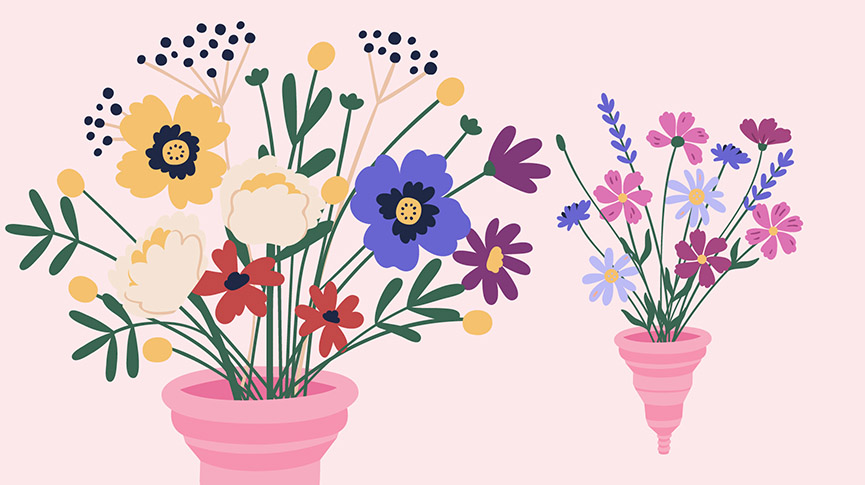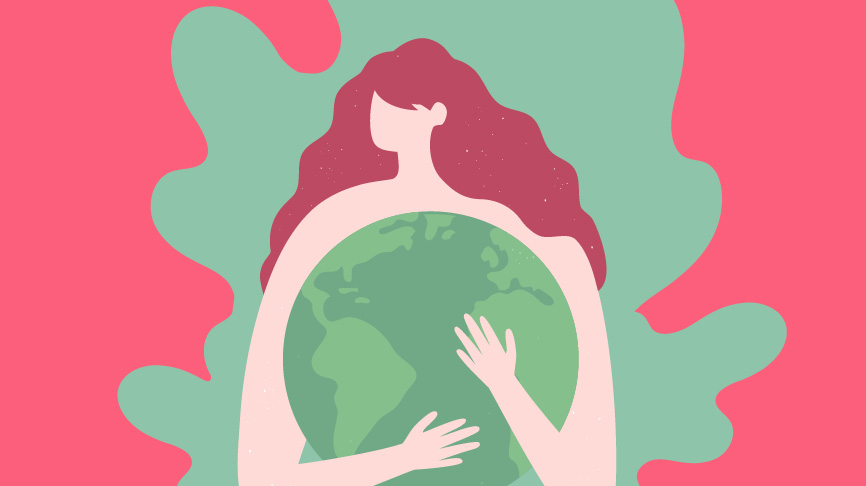Earth Day: Tips for Making a Significant Environmental Difference!

The sustainable lifestyle has become one of the most important trends worldwide. And the sustainability movement is driven mainly by women expressing environmental concerns where disposable menstrual products play a significant part. So, for this year’s Earth Day, INTIMINA, an intimate health brand, asked 2000 women aged 18-45 about how aware they are of their ecological contribution when it comes to menstrual products.
Many traditional plastic-based feminine hygiene products take over 500 years to decompose. On average, a woman uses 12,000 disposable sanitary products in her lifetime, and 20 billion menstrual products end up in landfills each year. These facts have affected women around the world to change their menstrual hygiene habits and switch to healthier and eco-friendly reusable products such as menstrual cups.
What is your lifestyle?
In INTIMINA’s survey, 72% of respondents said they consider their lifestyle sustainable, meaning they try to make choices that aim to reduce their individual and collective environmental impact. When purchasing and using menstrual products such as pads and tampons, 59% of respondents consider the effects on the environment and the amount of menstrual waste these products represent.
67% of respondents were unaware of the average number of disposable menstrual products women use in their lifetime. Still, 42% did try more eco-friendly menstrual products – with 63% choosing a menstrual cup or other reusable menstrual products.
There are many reasons why menstrual cups are good for the environment and health. The survey shows that respondents are well aware of these benefits. When asked to name reasons why they would be inclined to switch to a menstrual cup, they chose multiple answers resulting in 48% favouring the money-saving aspect. A menstrual cup can last up to 10 years, which means enormous savings from taking pads and tampons off the shopping list.
Menstrual cups – yes or no?
39% would choose a cup because it is hassle-free and can be worn for up to 8 hours without emptying it, which provides a sense of comfort during menstruation. 38% believe menstrual cups are a healthy choice because they are made of medical-grade silicone, while most pads and tampons contain chemicals and plastic. 38% opted for the fact cups are reusable, giving people a chance to reduce their menstrual waste.
Using a menstrual cup allows people to make a significant environmental difference by ending their contribution of disposable menstrual products to the earth. To help everyone understand their menstrual waste production and its impact on the environment, INTIMINA created the Greentimina Menstrual Waste Calculator. This simple tool calculates the amount of waste a person produces by using disposable menstrual products during their lifetime. It also estimates how much money a person will spend on those products.
When it comes to changing our daily habits for environmental benefits, changing personal menstruation management and switching to reusable products plays a crutial part. The numbers describing the waste attributed to disposable menstrual products can be overwhelming. Still, with small steps and small decisions oriented towards purchasing eco-friendly products, each person can reduce their carbon footprint and make a difference in saving the planet.
Here are some of our tips for creating a more eco-friendly home and celebrate this Earth Day!
1. Do The Earth A Solid (Shampoo)
Less packaging = less plastic, so whenever possible, opt for beauty and hygiene products that use less packaging. Lush is famous for its big chunks of soaps, moisturizer bars and more, but they’re not the only company that creates shampoo bars!
It’s an eco-friendly option is not only great for traveling when you have to be mindful of liquid allowances – it’s also our fave way to get our hair lathered and lovely without dooming a plastic bottle to lurk in the corner of the shower with half an inch of liquid in the bottom.
Dread the squishiness of a waterlogged bar? Look for self-draining soap dishes that have a spout or angle to them. Or, go super old school and install a soap magnet in your shower!
2. Say Bye To MicroBeads
What are microbeads? Basically, they are little plastic beads in most exfoliating scrubs that end up in the oceans as plastic pollutants. The manufacturing of microbeads has been banned in some countries, but not necessarily the importation of products with microbeads. So if you’re shopping for a much-raved-about exfoliator from abroad, make sure to check whether it uses microbeads, and whether those microbeads are biodegradable or not. Of course, if your skin type needs serious exfoliation, it may be better to switch to chemical exfoliants instead.
3. Up With Cups!
We’d be remiss to ignore the contribution a menstrual cup makes when it comes to reducing waste! It takes about 6 months for a tampon to biodegrade (to say nothing of the plastic applicator) and even pads are mostly plastic. A cup could help you reduce your personal waste level (which can be about 270,000 tons a year for women in the US alone) and it’s reusable for years if you take care of your cup properly.
Just check out Greentimina to calculate your own period waste usage!
4. Reuse…
Menstrual cups and cotton panty liners aren’t the only thing that you can re-use in the bathroom. There are plenty of companies coming out with reusable fabric pads and clothes that can be used to take your makeup off, without waste!
We love the glow we get from using a good old-fashioned terry facecloth, though some people prefer chamois (shammies) or bamboo cloths. Whichever washcloth best fits your skin, just remember to always wring it out thoroughly, hang to dry, and switch out your cloth for a clean one every 2-3 uses. The same goes for your reusable makeup pads!
5. …And Recycle!
Cosmetics are famous for adorably cute little containers….that usually end up in the landfill. If your container has a 1 or a 2 in the recycle sign, it can go with the rest of your plastic recyclables. Or, you can take it to a MAC store and get a sweet free product in exchange!
According to the MAC website, if you bring back six ‘primary packaging’ plastics (think, the actual compact, not the box it comes in) then you’re entitled to a free lipstick – just contact your local store to ensure they’ll accept packaging.
6. Plant a Tree
Have you heard how your body relaxes while walking in the woods or hugging trees? Then imagine how good would you feel after you plant one tree on your own. Try it and leave a mark on the World. This spring, try to revive the planet and give it the gift it deserves – Plant a tree!
7. Little Changes With Big Impacts
The truth is, the biggest positive changes to the environment will come from companies choosing greener practices. But the best way that consumers can make sure that happens is by supporting companies that do make environmental choices, and voicing their opinion to the ones that don’t!
Please note that advice offered by Intimina may not be relevant to your individual case. For specific concerns regarding your health, always consult your physician or other licensed medical practitioners

Lane Baumeister is an internationally-based Canadian writer with several years’ experience creating educational and entertaining articles that discuss intimate health and sexual well-being. When not waxing profound about menstruation, she devotes herself to enjoying extremely good food and equally bad movies.




